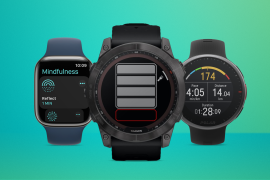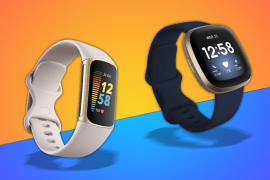Google Pixel 9 review: AI-powered brilliance
The latest Pixel delivers cutting-edge tech wrapped in a sleek, refined design – but is it worth the extra cash?
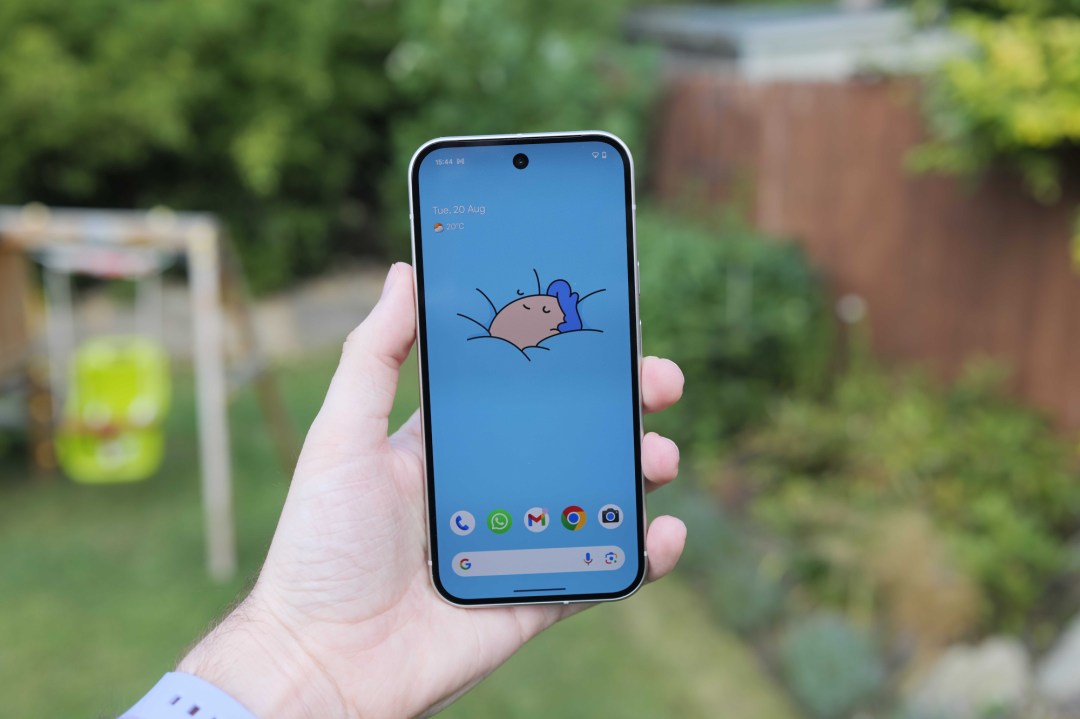
Stuff Verdict
The Pixel 9 blends top-tier AI features with a stunning design and exceptional camera capabilities. The Tensor G4 chip and a brilliant display sets a new standard for Pixel smartphones.
Pros
- Superb camera system with AI-powered editing
- Brighter display than Pixel 8
- Big step up in terms of design, build and premium materials
- Seven years of OS and security updates
Cons
- Charging speeds still behind competitors
- Not the outright bargain previous Pixel phones were
Introduction
Pixels were once the phone world’s scrappy underdogs, offering the purest Android experience and top-tier features at prices that undercut the competition. For the Pixel 9, the mantle of budget-friendly brilliance has been passed to the A-series; Google wants this to be the best phone, period – not just the best phone for sensible money. Cutting-edge AI and photography tech are the order of the day, along with a more premium price to match.
A new Tensor G4 chip promises blazing performance and Gemini smarts that put it squarely in the ring with the likes of Samsung and Apple. A sleek, refined design and high-end features set it apart from previous efforts, which were more content in the mid-range.
That means it no longer stands out as the bargain buy it once was. And barely six months on from launch, the fresh-faced Pixel 9a has closed the gap massively. Is the Pixel 9’s new premium experience worth the extra cost?
Review originally published August 2024. Last update 21 March 2025: Pixel drop software updates, Pixel 9a launch
How we test smartphones
Every phone reviewed on Stuff is used as our main device throughout the testing process. We use industry-standard benchmarks and tests, as well as our own years of experience, to judge general performance, battery life, display, sound and camera image quality. Manufacturers have no visibility on reviews before they appear online, and we never accept payment to feature products. Find out more about how we test and rate products.
Design & Build: sleek and sophisticated

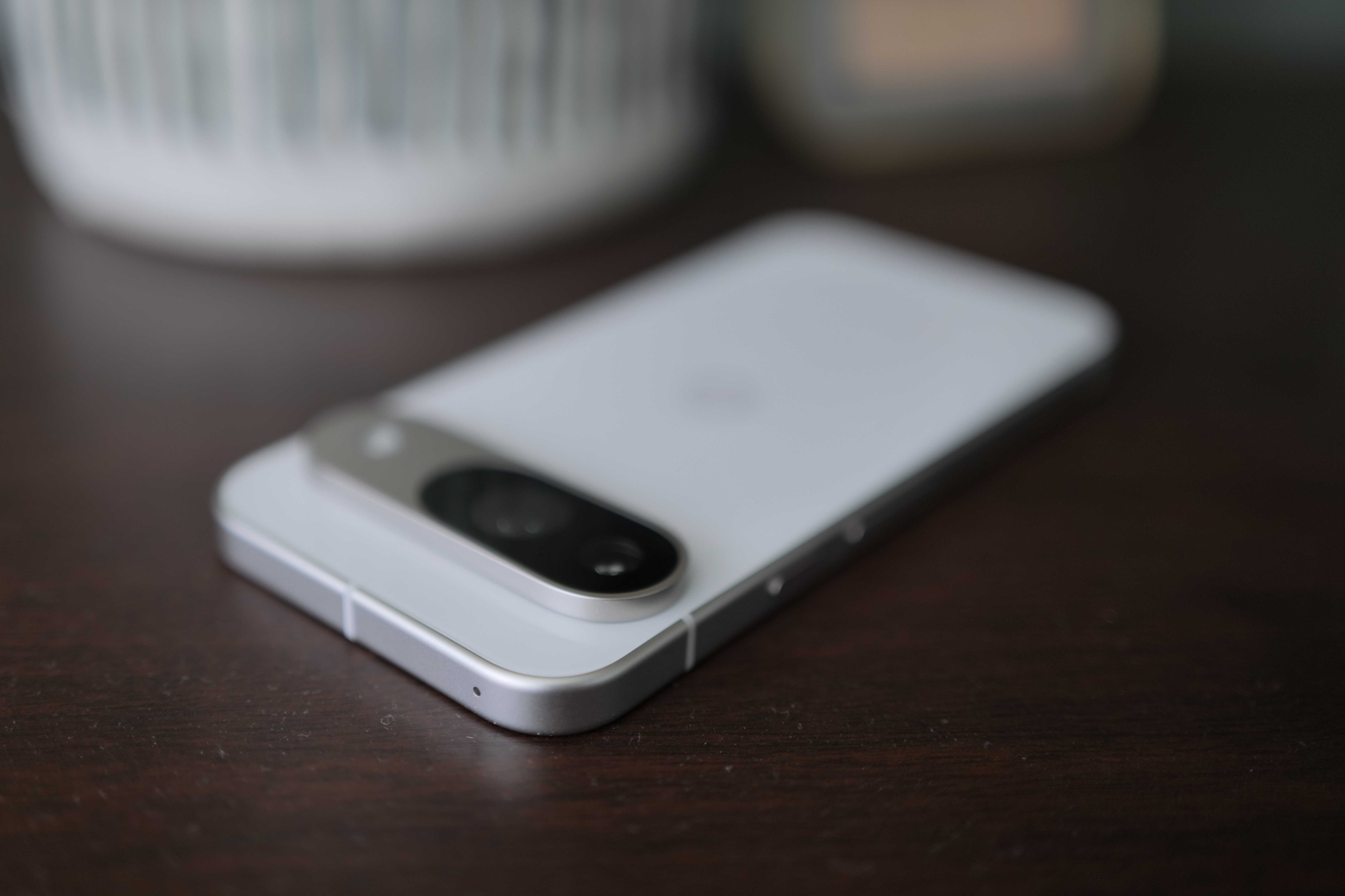
The Pixel 9’s shift to a more premium segment is immediately noticeable. Google has traded the soft, rounded edges and plastic back of the Pixel 8 for straight edges, sharp angles, a glossy glass back, and matte metal sides. The design feels reminiscent of an iPhone 15 (which is high praise) and certainly elevates the phone’s overall premium aesthetic. The Pixel 9a isn’t far behind with a metal frame of its own, but it sticks with polycarbonate at the rear.
The camera bar remains a signature Pixel design feature, once again taking centre stage to highlight Google’s focus on photography. This year, it’s evolved from an edge-to-edge band into a pill-shaped island that protrudes noticeably from the phone. I found it can catch on your pocket, but this issue quickly disappears once you get a case on it. The Pixel 9a has deleted it in favour of a much smaller, subtler blob; at least it means no-one will mistake this phone for the cheaper version.
With a 6.3in display, the device is well-balanced and comfortable to hold, even with one hand. The materials and finishes give the phone a reassuring grip. However, for those who crave even more screen real estate, you’ll need to opt for the 6.8in Pixel 9 Pro XL model.
Unlike previous generations, where choosing the standard Pixel meant sacrificing top-tier camera features exclusive to the larger Pro model, Google now has three options: Pixel 9, Pixel 9 Pro, and Pixel 9 Pro XL. The introduction of a 6.3in Pixel 9 Pro, the same size as the standard model, adds a new layer of complexity to your decision.
That said, the standard model doesn’t feel any less premium than its Pro siblings. In fact, I prefer the glossy back and matte aluminium sides of the standard Pixel 9 to the matte back and polished aluminium sides of the Pro model. Durability has also been improved, with Google claiming the Pixel 9 is twice as durable as its predecessor. As expected in a flagship phone in this price bracket, the Pixel 9 has IP68 water resistance.
The Pixel 9 comes in a range of eye-catching colours, with ‘Peony’ (pink) being the boldest choice. For those who prefer a more understated look, ‘Wintergreen,’ ‘Porcelain,’ and ‘Obsidian’ are more reserved options. I’m particularly impressed with the new colour palette – these shades are more subtle and lend the phone a more premium feel compared to previous Pixel models. My review unit, in ‘Porcelain’ (white), also does an excellent job of hiding fingerprints.
Screen & Sound: blinding lights
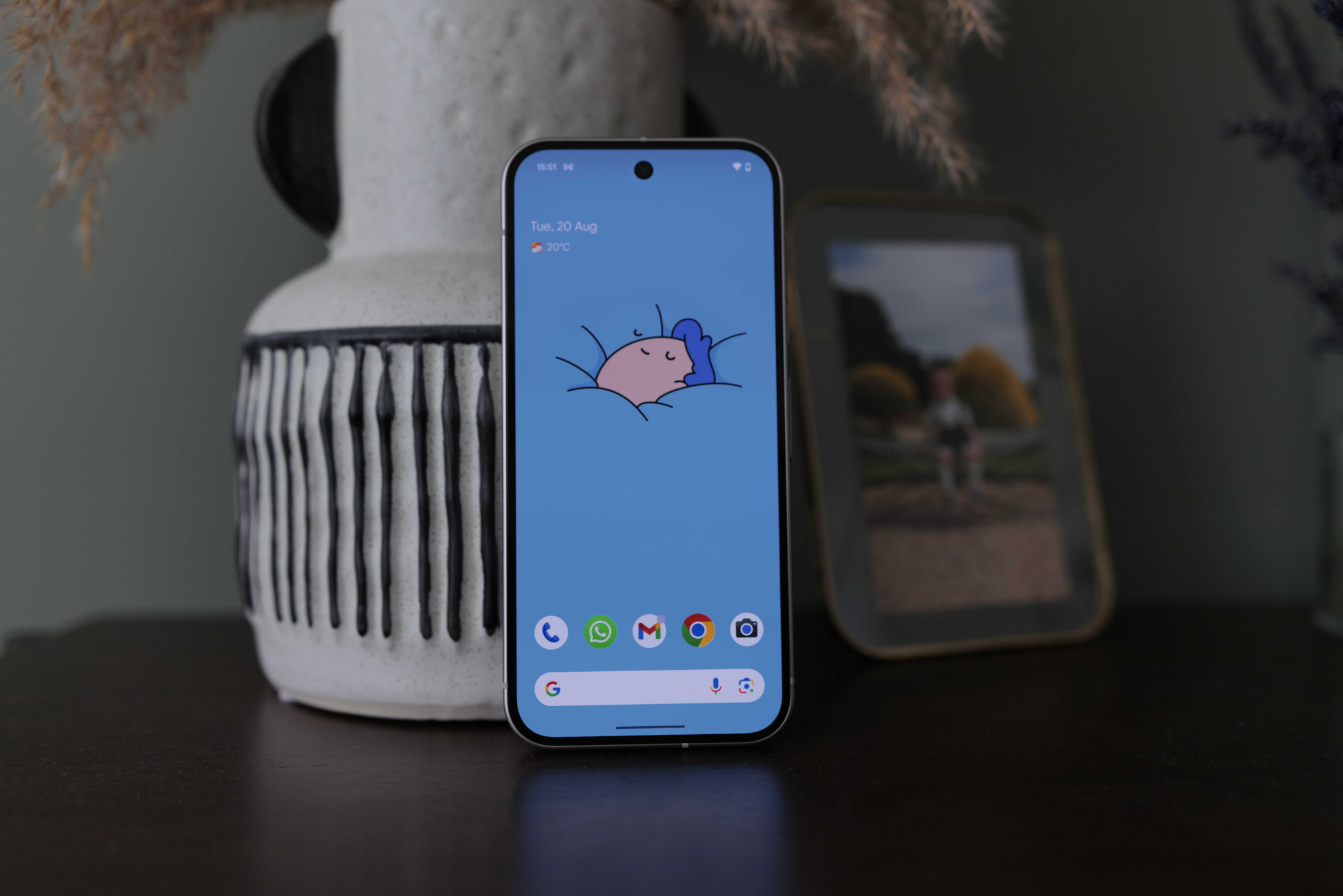
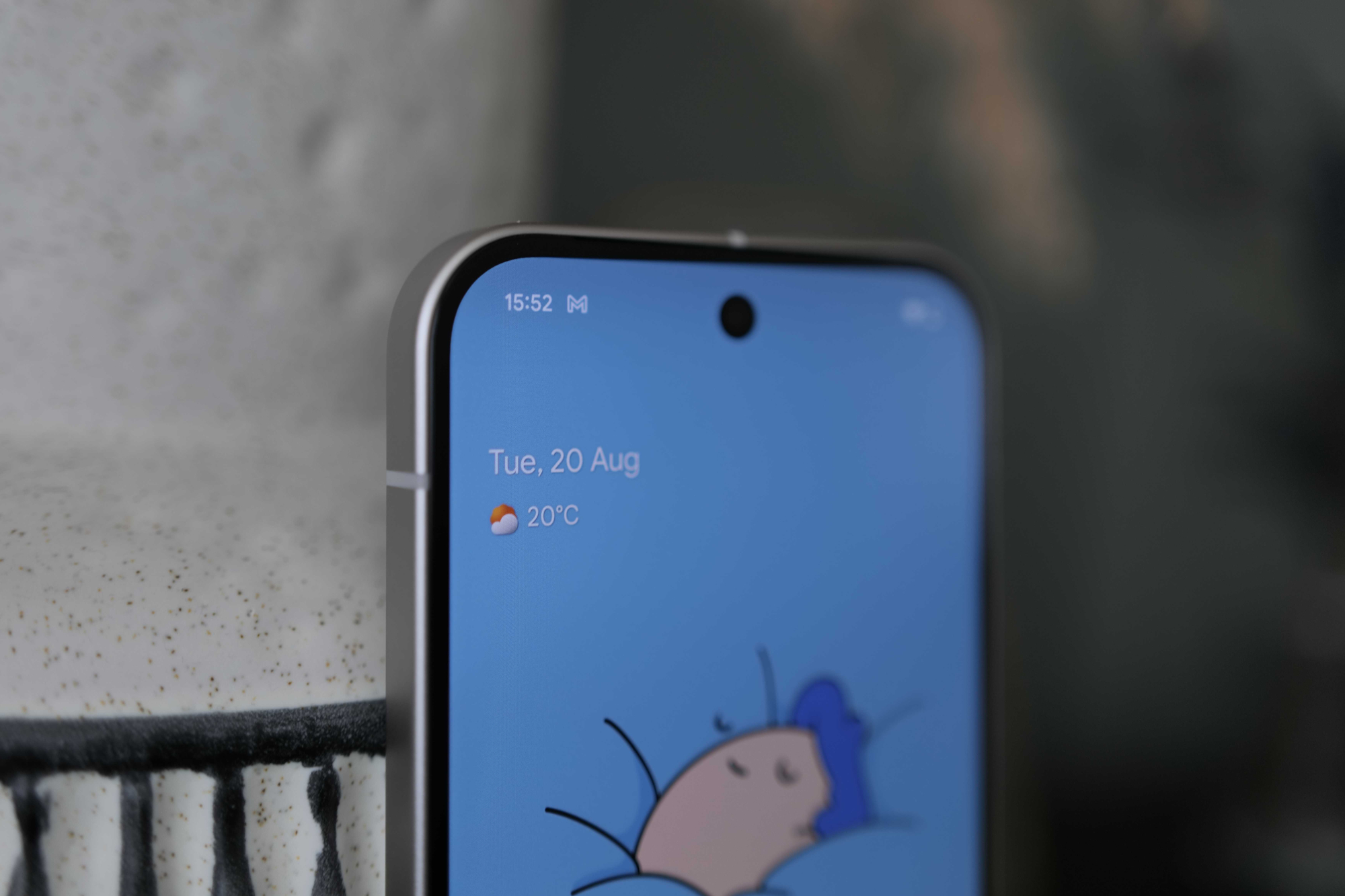
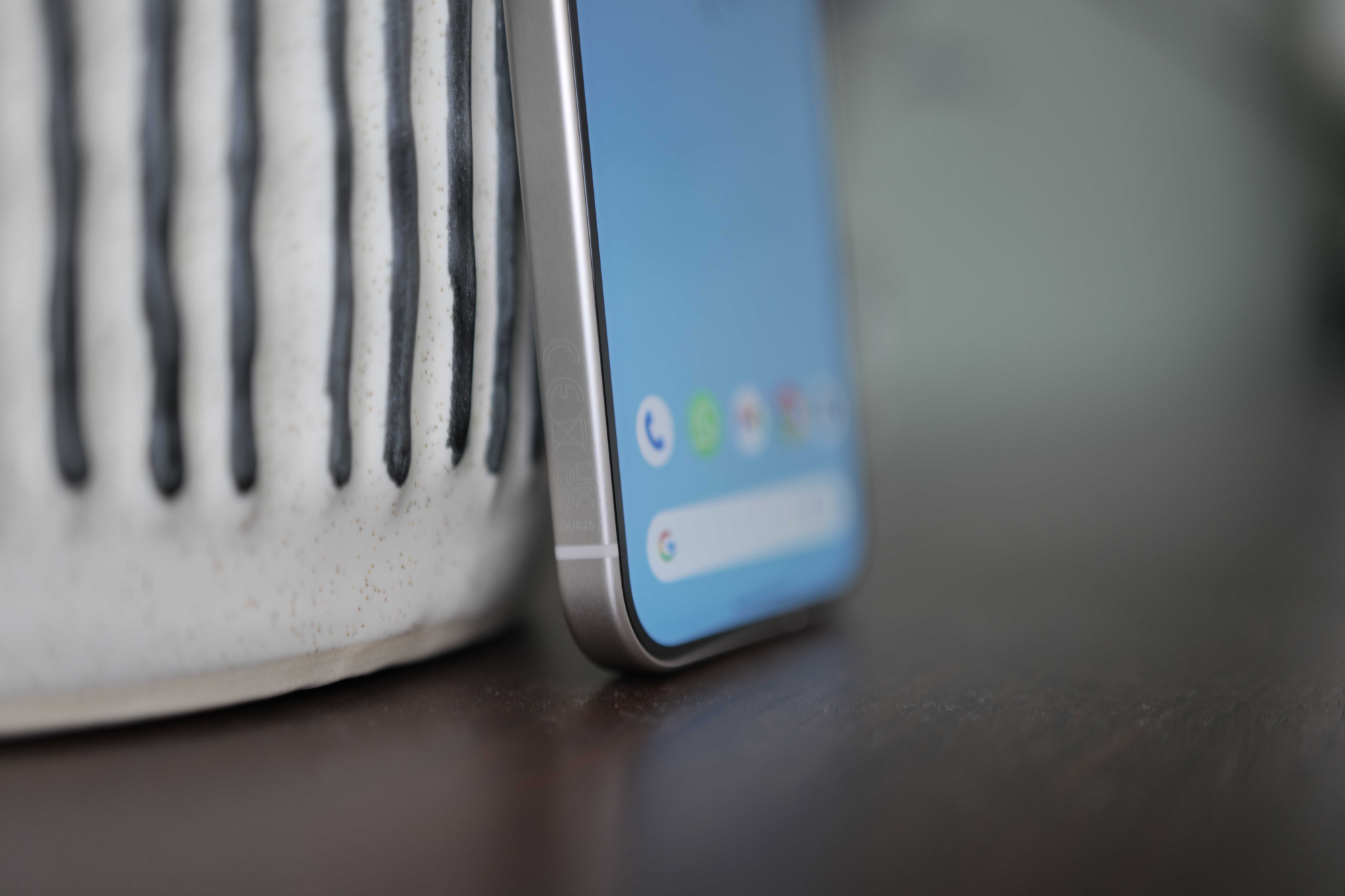
Staying relatively compact, the resolution hasn’t changed from last year, meaning the Google Pixel 9 gets a 2400×1080 OLED panel stretched across 6.3in. On paper, not too much has changed.
The big upgrade here, however, is to the brightness. The new Actua display is a significant upgrade from its predecessor, being 35-percent brighter than the Pixel 8 (reaching a peak 2700 nits brightness, better than both the iPhone 15 and Samsung Galaxy S24). This brightness boost ensures visibility even in direct sunlight – I didn’t have any issues when scrolling Instagram on a sunny day.
Deep blacks and vibrant colours are standard for an OLED panel, and the Pixel 9 makes no exception. It’s a lovely display to look at, with both still images and videos looking punchy, yet true to life.
Personally, I find the default setting feels a little too saturated, so opt for the Natural colour preset which tones it down a bit. Whichever profile you opt for, you’ll get a sharp, saturated, and well-defined image.
Like last year’s phone, the refresh rate tops out at 120Hz. It’s worth noting you can’t force it to constantly run at 120Hz, with Google dynamically switching between 60 and 120Hz depending on what’s onscreen. You can turn it off to save battery life, but I think the smoothness of every swipe and scroll makes the minor hit to battery life worth it.
Audio-wise, the Pixel 9 holds its own. Despite losing one speaker, the audio is loud and crisp with decent bass. Of course, they don’t quite reach the heights of a Bluetooth speaker, but for general podcast listening, the odd song, or YouTube playback, I found the speakers perfectly clear.
As with previous models, there’s no headphone jack, so you’ll need to rely on Bluetooth or USB-C audio for private listening.
Cameras: upgraded ultrawide
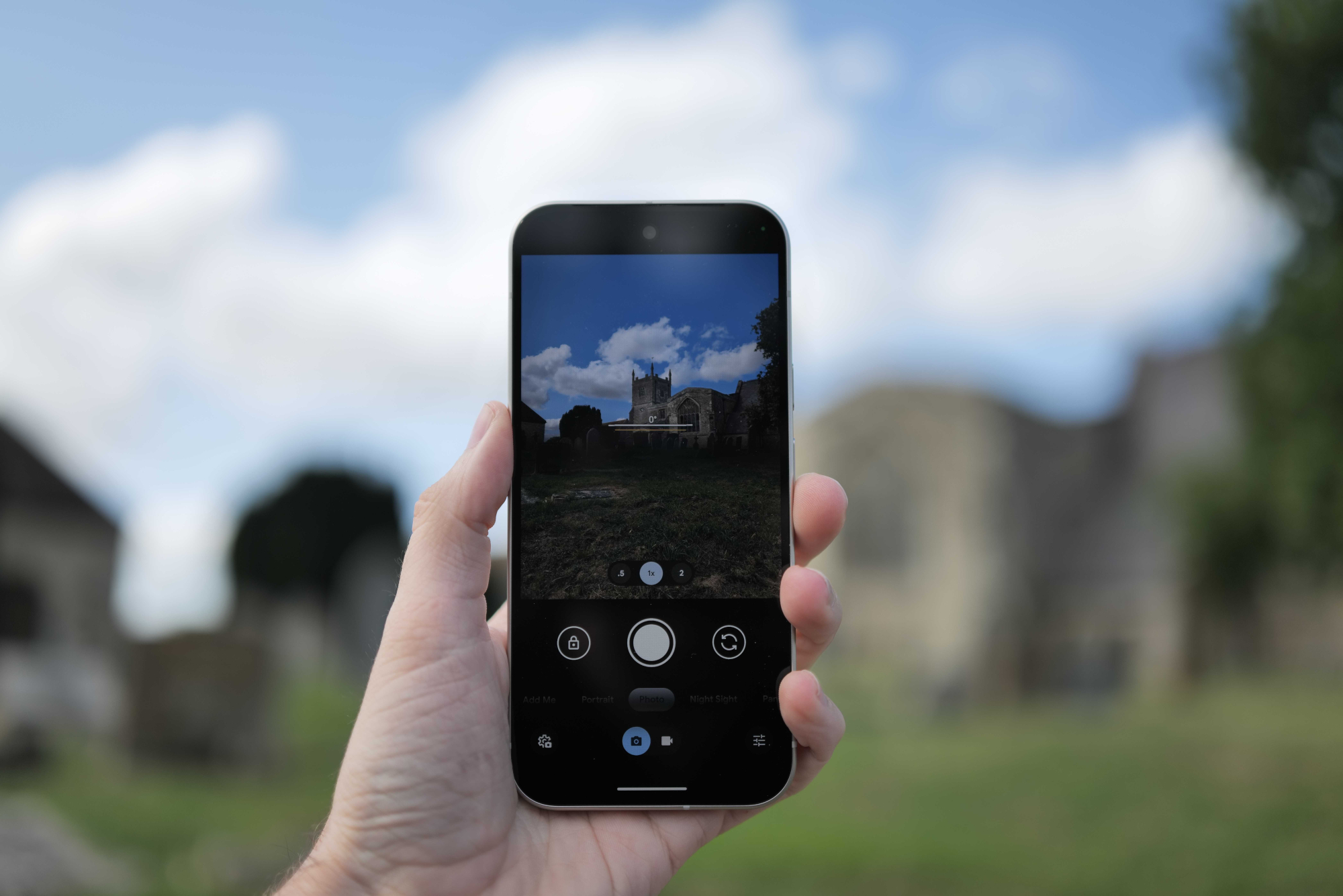

The camera system has always been a highlight of the Pixel series, and the Pixel 9 continues that tradition with gusto. The main camera remains a 50MP sensor, however, the real standout is the ultrawide lens, which now boasts an impressive 48MP sensor, a significant upgrade from its predecessor. This results in even sharper, more detailed photos with a broader field of view, making it an outstanding option for landscape and group shots.
As always, Google’s computational photography sets the Pixel 9 apart from the competition. With AI-powered features like Magic Editor and Best Take, photo editing is intuitive and seamless, allowing you to enhance your shots effortlessly. The combination of advanced hardware and Google’s top-tier image processing ensures that each photo is meticulously perfected before you even see the final result.
Google’s latest trick is the ‘Add Me’ feature, which lets you take the picture and be in it too. The camera mode lets you take one photo of the group, then swap in the photographer and take a second picture (with the first photographer as part of the group). The Pixel 9 will then magically stitch both photos, together. It’s a clever trick and very simple thanks to the on-screen prompts. However, the group needs to remain still between photos, which can be challenging if it includes babies or people who’ve had a few drinks. This feature is still labelled as a ‘Preview’ so it could improve over time.
Magic Editor can now also automatically reframe your photo, suggest the best crop and even expand your image to get more of the scene. It’s useful if you don’t have Photoshop, but I’ve found the results can be hit or miss (especially under zoomed-in scrutiny).
Low-light performance remains exceptional, with the Pixel 9 excelling in capturing well-lit, detailed images in challenging lighting conditions.
The 48MP ultrawide lens complements the main camera beautifully, offering excellent colour consistency, dynamic range, and exposure, with only minimal softening and distortion at the edges. Google’s Super Res Zoom also returns, offering up to 8x magnification through software tricks. While the zoomed images may lose some sharpness at higher magnifications, they remain perfectly usable, especially between 2x and 4x zoom.







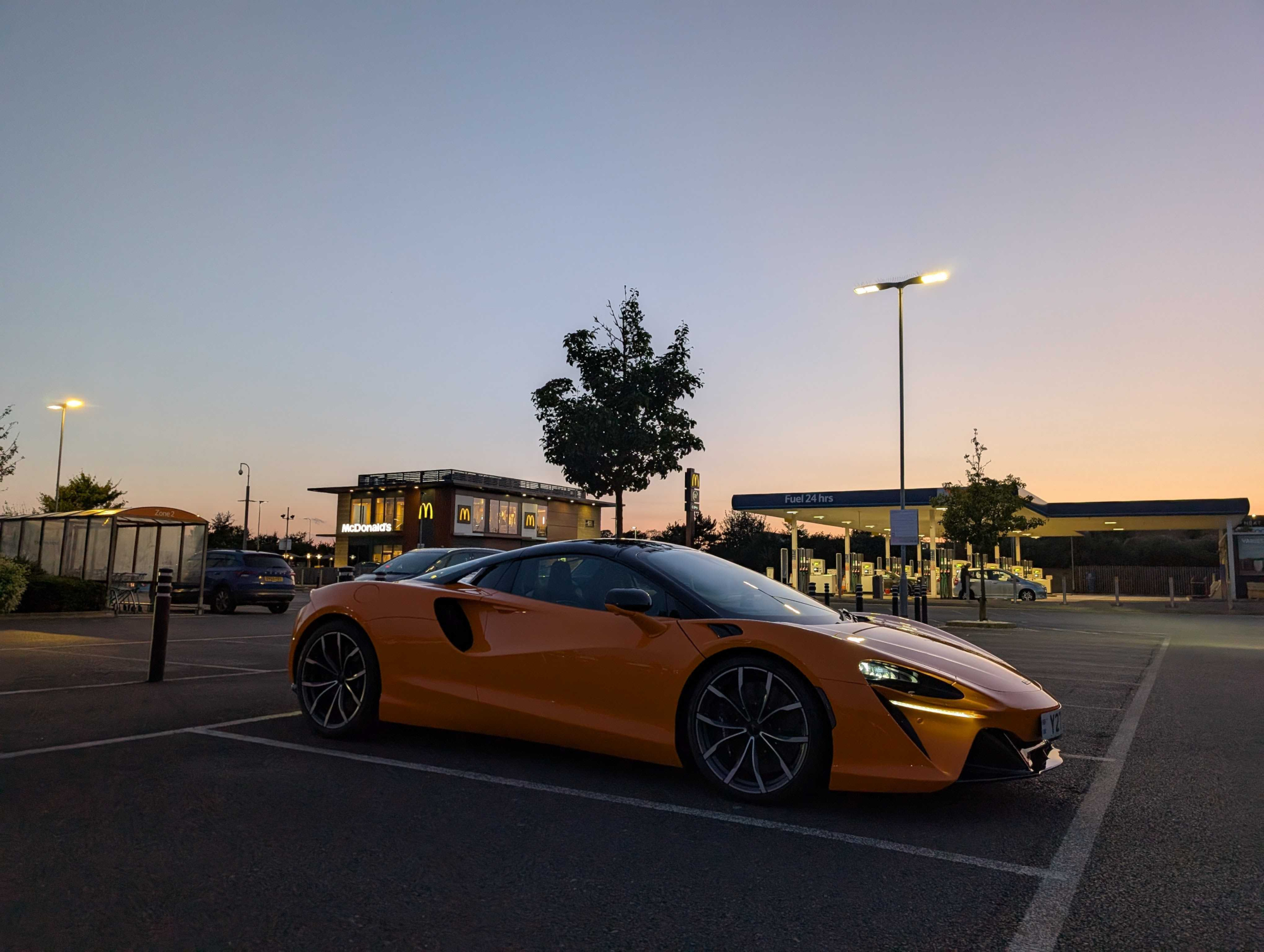
The front-facing camera has the same 10.5MP sensor as found in the Pixel 8. It’s a reliable selfie snapper, that ensures that your selfies are crisp and vibrant, even in low light.
The overall camera experience on the Pixel 9 is simply outstanding, delivering impressive detail, dynamic range, and natural colour balance across all shots. Google’s Real Tone skin tone mapping continues to excel, producing flattering and accurate skin tones, while autofocus is quick and reliable.
For those seeking the ultimate camera experience, however, the Pixel 9 Pro steps things up further with advanced zoom capabilities and an upgraded 42MP front-facing camera. However, the Pixel 9 still offers an excellent all-around photography experience at a slightly more accessible price point.


With video capabilities supporting 4K at up to 60fps and impressive slow-motion options, the Pixel 9 is a versatile device for both photography and videography enthusiasts alike. Overall, the Pixel 9 builds on Google’s reputation for delivering top-tier smartphone cameras, continuing to raise the bar for what’s possible in mobile photography.
Software Experience: AI at your fingertips
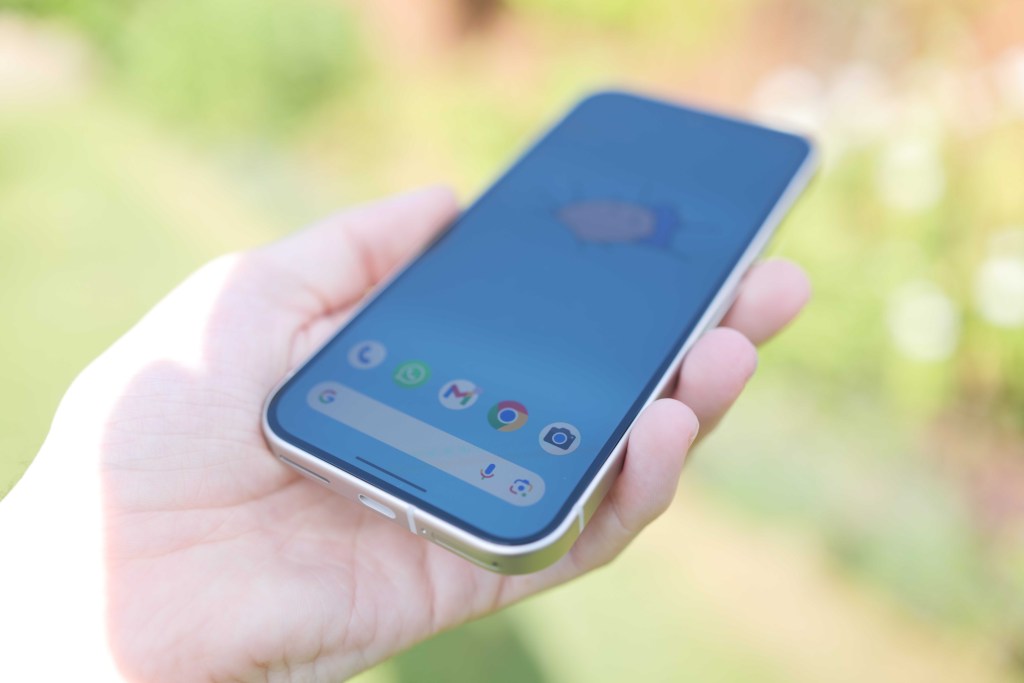
Google’s Pixel phones have always been known for their clean, bloatware-free Android experience, and the Pixel 9 is no different. Running on the latest version of Android, the Pixel 9 benefits from seven years of OS and security updates, making it a solid long-term investment for those who don’t upgrade their phones every other year.
Because the Pixel phones have arrived earlier than usual this year, they’re shipping with Android 14 rather than Android 15. That means the core software experience remains similar to previous Pixel models. Of course, the Pixel 9 will be the first to get the next version of Android when it does drop later this year.
The Tensor G4 chip powers a host of AI-driven features that elevate the Pixel 9’s user experience, some of which are more useful than others…
Gemini Live, exclusive to Gemini Advanced subscribers, offers an immersive, hands-free experience, allowing for natural, free-flowing conversations with Gemini – reminiscent of the film Her. Subscribers can brainstorm ideas, practice dialogues, and even choose from 10 distinct voices for a more personalised experience. The demos look impressive, though I haven’t had the chance to try it myself, as I don’t pay $20/£19 per month for a Gemini Advanced subscription.
The Pixel Studio app is another new addition. It lets you create images on-device with AI-powered tools, similar to OpenAI’s Dall-E or Midjourney. The speed at which it generates images is very impressive.
Surprisingly, one of the standout features is the new ‘Screenshots’ app, which organizes your screenshots and uses AI to recognize text within them. This makes it easier to find specific images later on. It’s a small thing, but as a serial screenshotter, I’ve found it a very useful addition.
Google also improved how it organises your snaps in an early 2025 Pixel Drop. These feature updates are one of the reasons I love Pixel phones; you’re getting new features and old ones are improved on the regular, for free. Gemini Live sounds a little more natural now, the Pixel Studio image generator can create pictures of people for the first time, and scam detection gives some reassurance for unknown calls and texts.
Performance & Battery Life: Powered by Tensor G4

The Pixel 9 is equipped with Google’s latest in-house processor, the Tensor G4 chip, which delivers a significant performance boost over its predecessor. I found the new chip enhances the overall speed and responsiveness of the device, resulting in faster app load times and smoother transitions. During my review, I found the Pixel 9 handles switching between multiple apps, generating AI images, and editing high-resolution images with ease.
Paired with 12GB of RAM, the Pixel 9 is well-suited to handle a wide variety of everyday tasks, although, if you want even more power (and longevity), I’d steer you towards the Pixel 9 Pro, which has the same Tensor G4 processor but pairs it with 16GB of RAM.
Battery life has also seen a notable improvement in the Pixel 9, with the phone now lasting approximately 20-percent longer than its predecessor. This extended battery life is a welcome upgrade, especially as battery life isn’t traditionally the Pixel’s strong point. In the real world, that means you’re still only getting a day of use and charging every night, but I no longer felt the constant battery life anxiety I had with previous phones.
The Pixel 9 does have an ‘Extreme Battery Saver’ mode which stretches the battery to 100 hours, but this essentially turns the phone into a dumb phone so is only really useful in critical situations. Power users may want to opt for the Pixel 9 Pro XL with its larger battery, however, for the majority of users, the Pixel 9’s battery performance is more than sufficient.
While the increased battery life is a positive change, it’s important to note that the charging speeds still lag behind some of the competition. Google claims that the Pixel 9 can reach 50-percent charge in just 30 minutes (27 W charging speed) when using Google’s 45W charger, but this is still slower compared to the rapid charging speeds offered by other flagship devices, such as the OnePlus 12 and Xiaomi 14. These competitors have set a high bar for charging technology, so while the Pixel 9’s charging capabilities are respectable, they don’t quite match the speed of these industry leaders.
Price & Competition: the Pixel gets expensive
One of the biggest changes with the Pixel 9 is the price. Historically, Google’s Pixel phones were known for offering excellent value for money, but the Pixel 9 breaks that mould. Starting at $799/£799, the Pixel 9 is more expensive than its predecessors, and now competes directly with flagship models from Samsung and Apple.
While the Pixel 9 offers plenty of value in terms of features, the higher price tag may give some potential buyers pause. The days of the Pixel being the budget-friendly flagship killer are over. It’s also impossible to ignore the Pixel 9a, which starts at $499/£499. It has a the same size screen, same chipset, and a very similar lead camera lens. Sure, Gemini isn’t quite as adept on account of having less RAM for its large language models, and materials aren’t quite as high-end – but the day-to-day user experience will be startlingly similar, for hundreds less.
This price bump also puts the Pixel 9 on par with the Samsung Galaxy S25 and the iPhone 16, both of which offer excellent alternatives. The Galaxy S25, for example, boasts a more versatile camera system with superior zoom capabilities, while the iPhone 16 continues to impress with its ecosystem integration and build quality. Choosing between these top-tier devices has just become a lot harder.
Google Pixel 9 verdict
The Google Pixel 9 ticked all the right boxes for a sub-flagship smartphone in 2024, and it continues to impress in 2025. With its powerful AI features, stunning camera system, and sleek design, the Pixel 9 is a top contender in the crowded premium smartphone market. Google has delivered a device that excels in day-to-day use, thanks to its seamless integration of AI and hardware.
However, the increased price may make it a tougher sell for those who were drawn to previous Pixel models for their affordability. The Pixel 9 Pro offers even better camera features and a larger screen at a slightly higher price, while the Pixel 9a does 90% of the experience for 30% less cash.
If you’re looking for a stylish, powerful smartphone with cutting-edge AI features, the Pixel 9 is an excellent choice. But for those who demand the very best in camera performance or want a larger display, the Pixel 9 Pro might be worth the extra investment. Regardless of which model you choose, Google’s Pixel 9 series is a very impressive phone.
Stuff Verdict
The Pixel 9 blends top-tier AI features with a stunning design and exceptional camera capabilities. The Tensor G4 chip and a brilliant display sets a new standard for Pixel smartphones.
Pros
- Superb camera system with AI-powered editing
- Brighter display than Pixel 8
- Big step up in terms of design, build and premium materials
- Seven years of OS and security updates
Cons
- Charging speeds still behind competitors
- Not the outright bargain previous Pixel phones were
Google Pixel 9 technical specifications
| Screen | 6.3in, 1080 x 2424, 120Hz OLED |
| CPU | Google Tensor G4 |
| Memory | 12GB RAM |
| Cameras | 50MP, f/1.7 w/ dual pixel PDAF, OIS, laser AF + 48MP, f/1.7 ultrawide w/ dual pixel PDAF rear 10.5 MP, f/2.2 w/ PDAF front |
| Storage | 128GB, 256GB |
| Operating system | Android 14 |
| Battery | 4700 mAh w/ 27W wired, 15W wireless charging |
| Dimensions | 152.8x72x8.5mm, 198 g |

